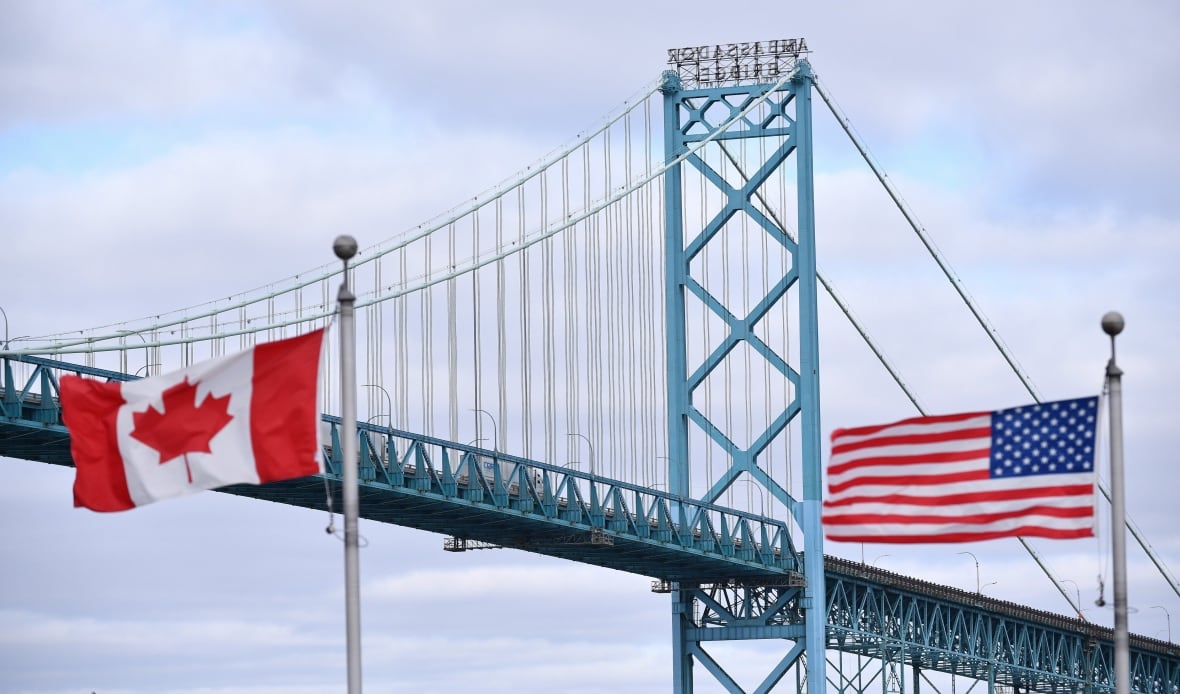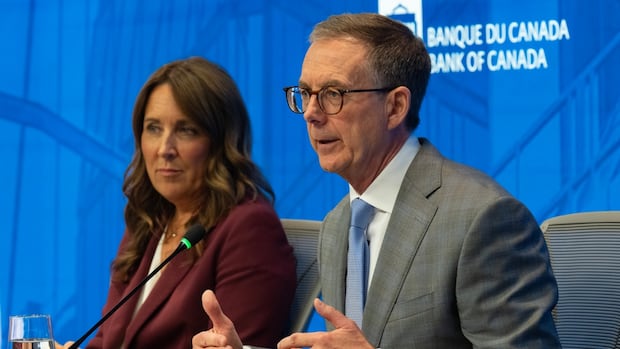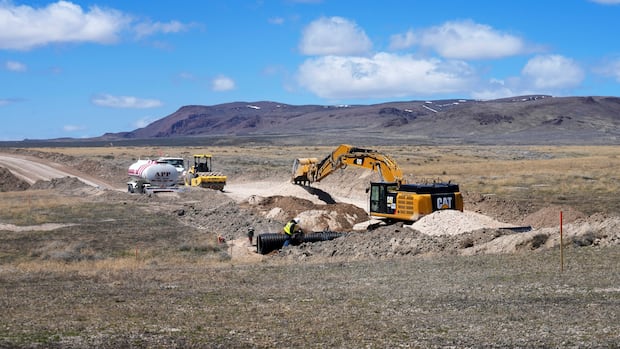Newly released documents show some members of the Bank of Canada were wondering last month whether the central bank’s benchmark interest rate is already low enough to support the Canadian economy through U.S. tariffs.
The Bank of Canada on Wednesday released the summary of deliberations from the meetings leading up to its decision on July 30 to hold the policy rate steady at 2.75 per cent.
Those minutes show the central bank’s governing council was fixed on how U.S. tariffs and the global trade “rewiring” were affecting inflation and the wider Canadian economy.
The central bank’s decision arrived just a couple days before U.S. President Donald Trump ratcheted base tariffs on Canada up to 35 per cent, while maintaining an exemption for goods compliant with CUSMA.
Despite the ongoing uncertainty, monetary policymakers noted there were some signs of economic resilience heading into the rate decision.
Rate cuts ‘sufficient’ to support economy
The deliberations show some members wondered if the Bank of Canada had already provided “sufficient support” to guide the economy through its tariff transition.
The central bank cut its policy rate seven consecutive times from June 2024 to March of this year in a bid to boost the economy as inflation showed signs of coming back under control.
Economists say much of the impact from a monetary policy decision tends to take effect a year or more after the move, so many of those rate cuts are just now starting to stimulate the economy.
Bank of Canada governor Tiff Macklem, when asked Wednesday if he sees the need for a rate cut this year, declined to forecast — but stressed that the bank is always watching for new information, especially around the Canada-U.S. trade situation.
In that vein, the Bank of Canada governing council wondered whether cutting rates now, only for the economy to recover on its own, would only end up fuelling inflation down the road.
“Given the lagged effects of monetary policy, there was a risk that further easing might take effect only as demand was recovering, which could add to price pressures,” the summary read.
Some forecasters, including RBC, have no further interest rate cuts in their base-case outlooks.
Others on the Bank of Canada’s governing council felt that signs of slack emerging in the economy could warrant additional rate cuts, particularly if the labour market started showing more weakness.
If incoming data showed inflation wasn’t straying too far from the central bank’s target of two per cent, there could be a need for a lower policy rate, those members argued in the deliberations.
No sharp rise in inflation with U.S. tariffs

Alongside the rate decision, the Bank of Canada issued three scenarios for how the U.S. tariff situation could evolve: the status quo persists; there’s a de-escalation in trade restrictions; and tariffs ramp up.
The governing council noted that none of those scenarios showed a “sharp rise in inflation.”
Monetary policymakers said in deliberations that the impact of tariffs on consumer prices “appeared to be modest so far,” but those effects were only just starting to show up in the data.
“Members judged the risks to inflation to be elevated given evident pressures on underlying inflation and the uncertainty around the impacts that tariffs and trade disruptions could have on Canada’s economy over time,” the summary read.
The Bank of Canada will get a fresh look at inflation figures for July and August ahead of its Sept. 17 interest rate decision.







